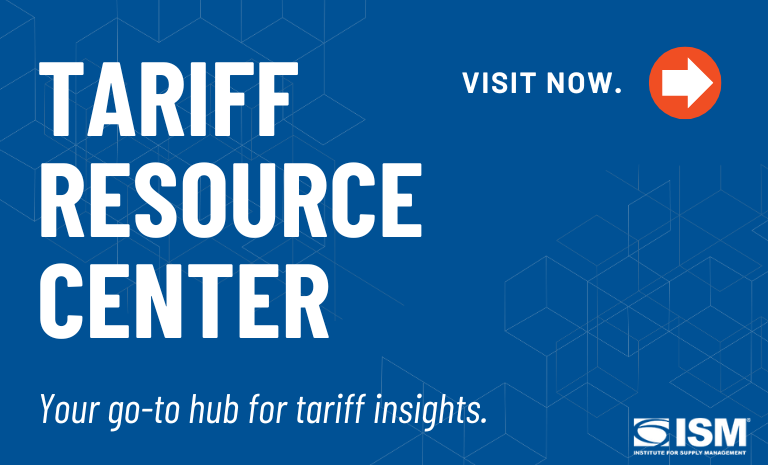Amid Tariff Turmoil, Proactive Supply Chain Strategies for Retail

The Trump administration has revived tariffs as a core instrument of U.S. trade policy, imposing sweeping new duties on imports from Canada, Mexico and the European Union, a 10-percent baseline tariff on nearly all U.S. imports, and sharply elevated rates — up to 145 percent — on Chinese goods.
These actions and the threat of even greater tariffs to come have triggered a rapid escalation in trade tensions, with U.S. trading partners announcing retaliatory tariffs.
For retailers, the result has been a surge in sourcing costs, mounting supply chain complexity, and growing uncertainty in pricing and planning. Some companies have responded by front-loading inventory or passing costs to consumers, but such reactive approaches are insufficient for what is increasingly looking like a structural shift in global trade. The new normal will require long-term strategic adaptation.
A new report from TradeBeyond, Managing Tariff Turbulence in Supply Chains, highlights strategies that brands and retailers are using to build resilience and mitigate the risks posed by tariffs this year and beyond. These strategies include diversifying supplier bases, employing real-time scenario planning and exploring tariff engineering.
Diversifying Suppliers and Sourcing
While diversification has long been a foundational sourcing principle, 2025 has exposed just how fragile even moderately diversified supply chains can be. The recent tariff escalation caught many companies off guard — particularly in high-risk categories like apparel and consumer electronics — despite efforts to broaden their supplier bases.
What’s different now is the speed and scale of tariff changes, which are forcing brands to reassess not only their risk exposure but also supplier readiness. Many are moving beyond basic diversification, building out multiple pre-vetted alternatives in each major category and negotiating capacity-sharing agreements that enable production to shift on short notice.
To reduce exposure, sourcing teams are identifying new suppliers in lower-tariff regions and adjusting logistics networks accordingly. Some maintain a preferred vendor list within a centralized sourcing platform, ensuring two or three vetted alternatives in each major product category. Others are negotiating capacity-sharing agreements that allow production to shift quickly and without need for renegotiated factory approvals.
Mapping out a complete alternate supply chain on short notice is difficult and time-consuming, which is why leading companies are turning to digital platforms that centralize supplier profiles, certifications and performance data. Real-time visibility into supplier capabilities and compliance metrics is critical for managing the volatility of today’s new global trade order.
‘What-If’ Scenario Planning and Modeling
Uncertainty around tariffs has made scenario planning essential. Retailers need to be equipped to model different sourcing, pricing and inventory outcomes quickly — at any point in the planning cycle.
Scenario planning enables teams to ask “what if” questions: What if tariffs rise another 10 percent? What if a preferred supplier is suddenly targeted by new duties? What if rerouting or reshoring could reduce total landed cost?
The most resilient organizations are enabling cross-functional teams — not just finance — to run these simulations in real time. That requires a multienterprise platform that centralizes landed cost inputs and supports granular, SKU-level modeling based on shifting trade policies. The goal is to move from reactive cost-cutting to proactive decision-making.
To enable this, businesses are adopting open-costing systems that incorporate full cost breakdowns beyond free on board (FOB) pricing — factoring in freight, duty, insurance and compliance costs. When combined with real-time harmonized tariff schedule (HTS) classification data, these tools ensure accurate duty calculations and allow for rapid responses to new tariff conditions. This is no longer a theoretical exercise; it’s a core competency for companies navigating today’s sourcing challenges.
Exploring Tariff Engineering
Some companies are taking a more technical approach by exploring tariff engineering —modifying product design or classification to qualify for lower tariff rates. For example, an apparel manufacturer might adjust the fiber composition of a shirt to reduce its applicable tariff. Others are auditing high-risk SKUs to identify reclassification opportunities or substitute inputs that maintain quality while reducing costs.
Accurate tariff classification is the foundation of this strategy. Companies must ensure that every product has an HTS code assigned at the item level, based on material composition, construction and intended use. Misclassification can lead to overpayment or regulatory penalties, which makes regular auditing and staff training essential.
Businesses are also revisiting duty drawback programs, which allow companies to reclaim tariffs paid on goods that are eventually exported. Additionally, some are leveraging foreign trade zones (FTZs) to defer or eliminate tariffs on goods processed or stored within those areas. While these strategies may seem niche, they can offer meaningful savings, especially when margins are tight and tariffs high.
These and other strategies are covered in greater depth in Managing Tariff Turbulence in Supply Chains. As the trade landscape continues to shift, companies that invest in flexibility, transparency and cross-functional coordination will be best positioned to thrive. Tariffs may be unpredictable, but with the right strategies in place, retailers can protect profitability and maintain supply continuity.

